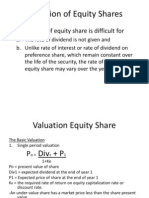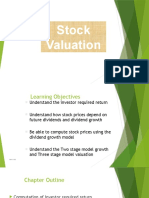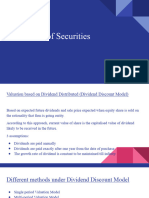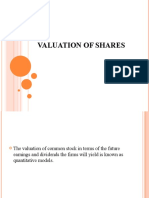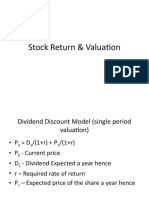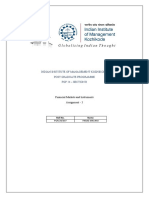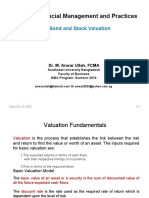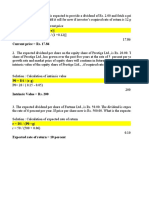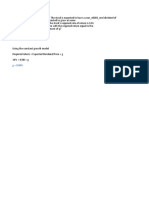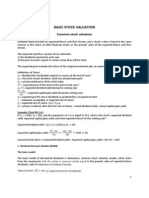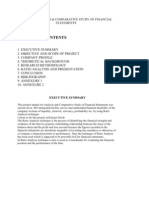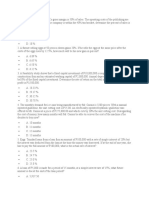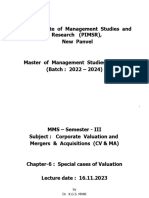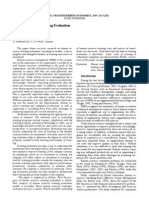0% found this document useful (0 votes)
158 views22 pagesEquity Valuation: Single Period Multi Period Growth
The document discusses three models for equity valuation:
1. Single period valuation model with formulas for calculating price given dividend and required return, and calculating required return given price and dividend.
2. Constant growth valuation model with formulas for calculating price given dividend, required return, and growth rate, and for calculating required return given price, dividend and growth rate.
3. Non-constant growth valuation model which involves calculating dividends in multiple periods with changing growth rates, and discounting the dividend cash flows to arrive at the current stock price.
Uploaded by
Shalma PintoCopyright
© Attribution Non-Commercial (BY-NC)
We take content rights seriously. If you suspect this is your content, claim it here.
Available Formats
Download as PPT, PDF, TXT or read online on Scribd
0% found this document useful (0 votes)
158 views22 pagesEquity Valuation: Single Period Multi Period Growth
The document discusses three models for equity valuation:
1. Single period valuation model with formulas for calculating price given dividend and required return, and calculating required return given price and dividend.
2. Constant growth valuation model with formulas for calculating price given dividend, required return, and growth rate, and for calculating required return given price, dividend and growth rate.
3. Non-constant growth valuation model which involves calculating dividends in multiple periods with changing growth rates, and discounting the dividend cash flows to arrive at the current stock price.
Uploaded by
Shalma PintoCopyright
© Attribution Non-Commercial (BY-NC)
We take content rights seriously. If you suspect this is your content, claim it here.
Available Formats
Download as PPT, PDF, TXT or read online on Scribd
/ 22




